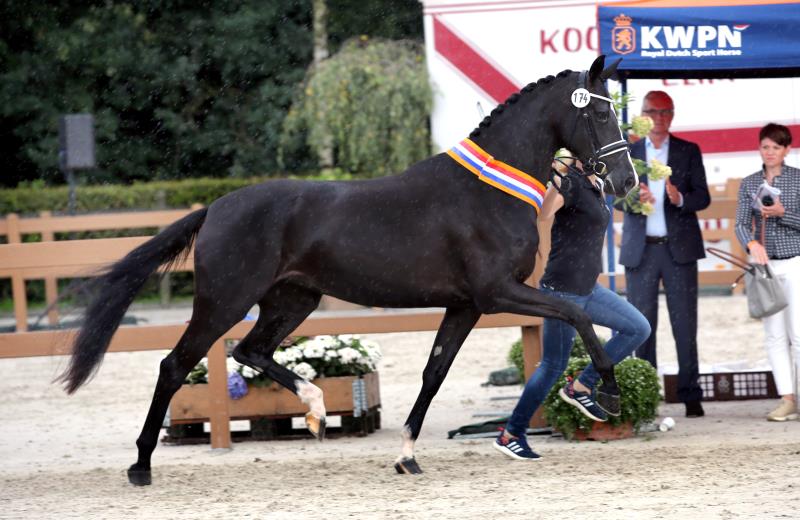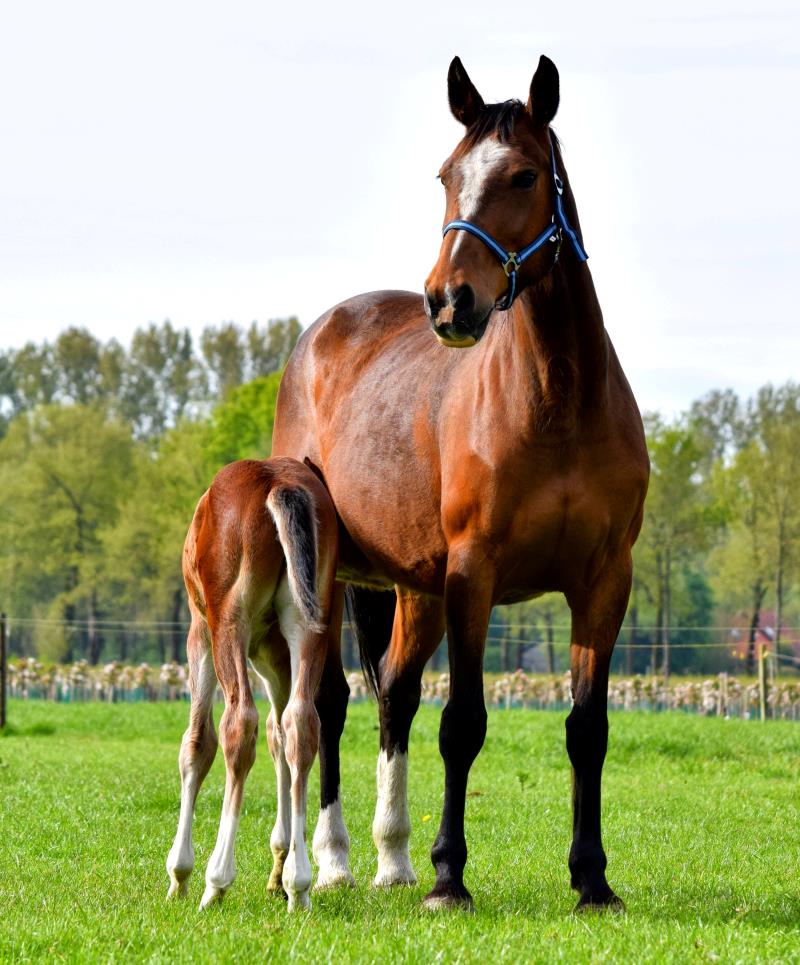Your first foal
You’ve enjoyed the sport for many years with your mare, so much so that you’d like to breed her as a way to continue your hobby. What should you know before you breed your mare? What stallion should you choose? And what kind of prenatal care will your mare require?
Step 1. The mare
You are already in possession of a mare. If your mare is KWPN bred, it is important that the passport is registered in your name. You can transfer a passport here. Do you not have a KWPN mare? Don't worry, you can still register your future foal at the KWPN.
Regardless of your end goal, it’s always wise to study your mare’s lineage and traits. What are her bloodlines and her sire’s traits, and what do you know about her dam’s or granddam’s offspring? What are your mare’s strengths, and what would you like to improve in your future foal? How would you describe your mare’s temperament: is she always willing to work, or is she usually lazy? Obviously, you want a healthy foal with a willing attitude. If you want a foal for a specific discipline in the sport, such as dressage or jumping, you should select a stallion from your discipline of choice.

Step 2. Choose a stallion
To find the right match for your mare, it’s important to study the available stallions. Don’t choose a stallion just because he’s popular or successful; instead, make your decision based on your goals for the foal. The KWPN offers a selection of more than 300 approved breeding stallions. In our Stallion Database, you’ll find extensive information on their strengths, weaknesses and – most importantly – the traits they pass on to their offspring. You’ll also find information about their temperament and their scores in the performance test, a pre-requisite for approval. Furthermore, the database contains hereditary information on older stallions and the traits they pass on to their offspring. Attending stallion shows is a fun and educational way to view the prospective sire of your foal live. Stallion shows are organized throughout the Netherlands in the spring and often include offspring of the featured stallions so that spectators can see the types of foals these stallions produce. Another way to learn more about young KWPN stallions is to attend the Dutch young horse competitions - the Pavo Cup for dressage horses and the Isah Cup for jumpers - at the KWPN Championships in August. These competitions are an excellent way to compare stallions, as are the stallion competitions in the fall and the finals at the Stallion Show in ‘s-Hertogenbosch in February. These competitions may also be viewed at kwpn.tv.
Choosing the right stallion to breed to your mare is a complex decision. Fortunately, we can help you in your decision-making process. The KWPN employs several professionals with expertise in bloodlines, who can provide you with breeding recommendations. In addition, we offer the KWPN Stallion Database, an online catalog of available KWPN-approved and KWPN-recognized stallions. This database contains extensive background information on KWPN stallions, as well as contact information for stallion keepers and availability of fresh or frozen semen.
Step 3. The insemination
Your mare should be inseminated during estrus (referred to as “in season” or “in heat” in the vernacular), an approximately five-day period occurring every three to four weeks. A mare is most fertile on the last two days of this period when ovulation takes place. Typical indicators of estrus include a higher tail carriage, a “winking” vulva, and more frequent urination when near other horses. Temperament changes may also occur during this time: your mare may become lethargic and irritable on the ground and less forward under saddle. To pinpoint the ideal time for insemination, your veterinarian may use ultrasound to view her follicle. If your mare does not come in-season or display obvious signs of estrus, your veterinarian may inject her with hormones to induce her cycle and perform an ultrasound 15 days after insemination. If your mare is pregnant, your veterinarian will likely perform two follow-up ultrasounds: one after six weeks and another after three months. He or she will also determine if your mare is in foal with twins, in which case one embryo should be aborted. A twin pregnancy often results in the death of one embryo or the birth of two incompletely developed foals, thus making intervention necessary.
Step 4. The pregnancy
Now that your mare is in foal, you could continue to ride her for the time being to keep her in good physical condition. In the last months of her pregnancy, however, you should monitor her response to exercise, as this is the period in which she may experience physical discomfort due to the increasingly rapid development of her foal. If she seems less interested in work, adjust your riding accordingly. During this period, daytime turnout and/or modified exercise will also help your mare when she’s ready to foal. Of course, proper nutrition is also important during this period and may include the addition of high-protein feeds. Consult your veterinarian to ensure you’re meeting your mare’s nutritional needs. You should likewise follow your veterinarian’s vaccination protocol to protect your future foal from illnesses. Finally, don’t hesitate to contact your veterinarian if you suspect your mare’s pregnancy is not progressing normally. Proper prenatal care throughout your mare’s pregnancy is the best way to ensure her health and that of her future foal and result in a rewarding experience for you!
Step 5. Your foal has arrived
Congratulations! After eleven exciting months it is so far, your first own foal is born. It is important that you have your foal chipped and registered within six months. This is required by law. Depending on which stallion you have chosen for your foal and in which studbook the mare is registered, you can register your foal with the KWPN in the Foal Book or register A or B.
Back to foal registration
KWPN Membership
- Subscription to the digital KWPN Magazine (in Dutch)
- Free advertising at KWPN Horses for Sale
About the KWPN
The KWPN (Studbook of the Royal Dutch Sport Horse) is a Netherlands-based organization specializing in the breeding of jumpers, dressage horses, harness horses, and Gelder horses.
More info






















 KWPN Database
KWPN Database KWPN.tv
KWPN.tv KWPN Horses for Sale
KWPN Horses for Sale